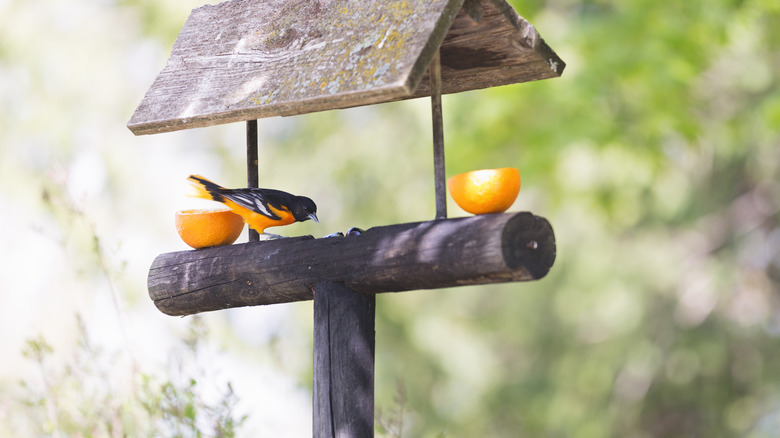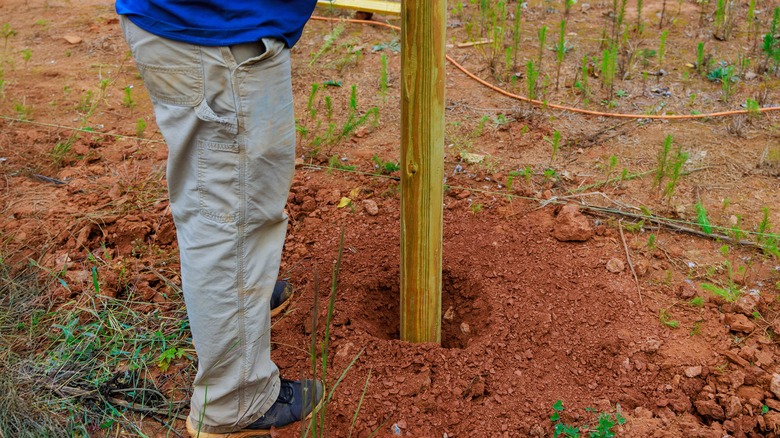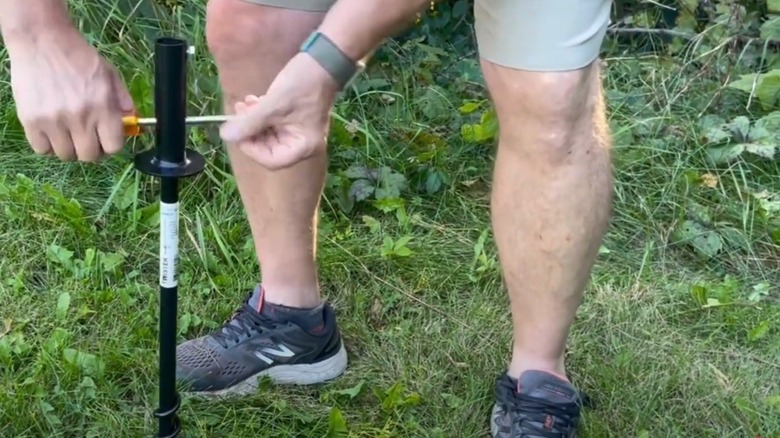Successfully Install A Bird Feeder Pole In Your Yard With These Tips
We may receive a commission on purchases made from links.
Having a bird feeder in your yard provides multiple benefits. You can feed the birds in your neighborhood, while also having a chance to watch them. Birds also eat insects around the house, which lets you spend more time outdoors comfortably without bugs bugging you. However, you may have some frustration with watching other animals — like squirrels, raccoons, rats, and mice — eating the feed. Also, with certain types of feeders, neighborhood cats may attack the birds while they're eating.
One option for enjoying your bird feeder while minimizing or eliminating some of the problems is moving it off the ground and hanging it. Hanging a bird feeder on a pole works well as an alternative to using a tree. You can add some parts to squirrel-proof your bird feeder pole, which ensures more of the food ends up with the birds.
If you're going to place your feeder on a pole, it's important to properly install the pole so it won't tip or fall when animals are climbing on it. A leaning pole looks bad, and when it leans, it may end up collapsing, causing you to lose all the seeds on the ground. Poles can lean because of their design, unbalanced attached weight, and the quality of the ground. Even if a pole doesn't visibly lean, if it's unstable it could be susceptible to falling. We'll explore how to install your bird feeder pole to avoid problems with tilt or unsteadiness.
Basic tips to install a wood bird feeder post
If you want to install a wood post for hanging the bird feeder, a 4-by-4-inch post is the best choice. This size of wood post works well for all kinds of outdoor projects, including fences, playsets, and deck guardrails. The 4-by-4 is extremely sturdy and often is a key component in providing stability for an outdoor fence, so it works well for creating a sturdy bird feeder pole, too. If you choose this option, always select one that features pressure-treated wood, allowing it to hold up against the dampness of the ground and potential insect damage, such as termites.
When burying the post, the depth of the hole should be between one-third and one-half of the total length of the pole to generate maximum stability. You commonly can find pressure-treated 4-by-4s in lengths between 8 feet and 14 feet. If you wanted to use a 12-foot post, for example, you would bury at least 4 feet of it in the ground.
To secure the 4-by-4 in the ground, you can use quick-dry concrete, which is the best way to create a sturdy post installation. However, you also can place the post in the center of the hole and use gravel, crushed rock, or sand as a fill around it. These materials will be less stable than concrete, though. Use a level to ensure it's straight. You could drive also a steel spike ($34 at Home Depot) into the ground that has a post sleeve at the top, securing the post into the sleeve with bolts.
Advice for installing a metal post for your backyard bird feeder
A small-diameter metal shepherd's pole with hooks is popular for hanging bird feeders, but it's possible that squirrels and raccoons could bend the pole as they try to jump on the feeders. Instead, you may want to consider a post that consists of solid metal, rather than a hollow tube. Solid tubes can be 8 feet tall or taller while remaining sturdy. You may want to consider a metal pole designed for a birdhouse, so it will be able to support plenty of weight. Birdhouse metal posts can often support 12 pounds or more.
When it's time to place the metal pole in the ground, the deeper the post goes into the ground, the sturdier it will be. Some metal poles use a base that has four or five prongs that go into the ground, providing stability by using multiple buried legs. You also can purchase a twist design, where the base of the pole has threads that you can screw into the ground. As you're driving the prongs or screwing the base into the ground, use a level to ensure the main section will be straight when you attach it.
To prevent the metal pole from leaning in the future, do not put more weight on the pole than it's designed to handle. Additionally, try to pick a type of feeder that has its weight balanced evenly on the pole, usually by mounting a single feeder to a plate on the top.


